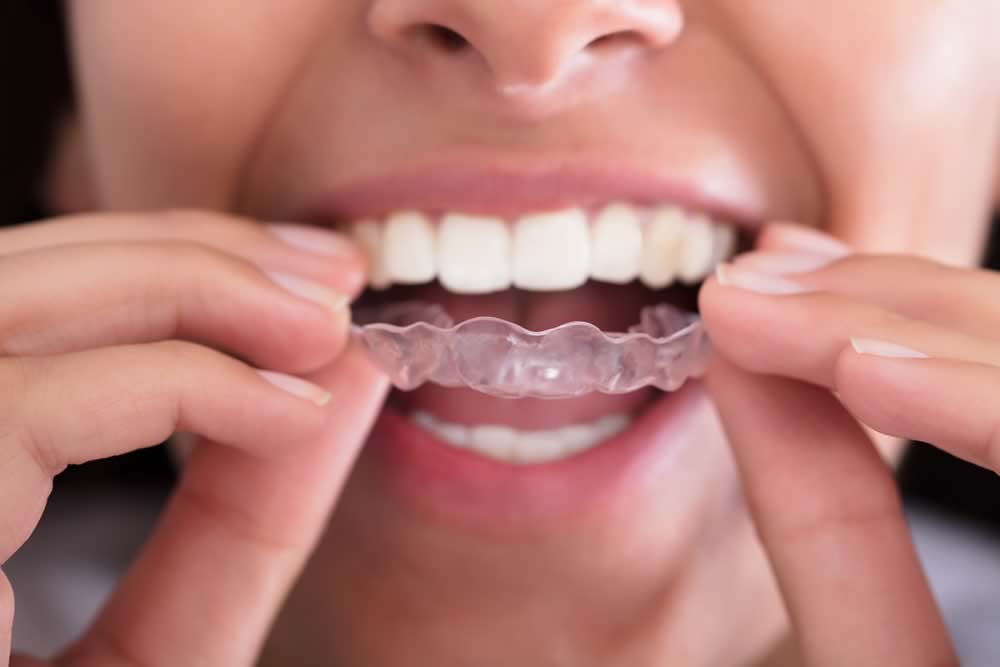
Dr O Dadashian
When it comes to straightening teeth with clear aligners, not all tooth movements are created equal. Understanding how different types of movements work can help you set realistic expectations for your treatment. Let's dive into the science behind three key types of tooth movements: intrusion, extrusion, and rotation.
Moving Teeth Inward (Intrusion)
Intrusion, or moving teeth deeper into the jawbone, is one of the more successful movements achieved with clear aligners. Research shows encouraging results:
• Average movement achieved: 0.72mm
• Success rate for upper front teeth: 45%
• Success rate for lower front teeth: 47%
• Least successful: Upper side teeth at 33%
Think of intrusion like slowly pushing a stick into sand - with the right pressure and direction, it's a relatively predictable movement. This is particularly important when preparing teeth for future dental work or correcting a deep bite.
The Challenge of Moving Teeth Outward (Extrusion)
Extrusion, moving teeth out from the jawbone, presents more challenges. Picture trying to pull that stick out of the sand - it's naturally more difficult than pushing it in. The research reveals some interesting findings:
• Overall success rate: Only 30%
• Average attempted movement: 0.56mm
• Success rate for front teeth: As low as 18-25%
Why is extrusion so challenging? Clear aligners work by applying pressure to the visible part of your tooth. When trying to pull a tooth outward, they have less surface area to grip onto, making the movement less predictable.
Mastering the Spin: Rotation Movements
Rotation is perhaps the most complex movement, especially for certain teeth. Here's what the research tells us:
• Overall accuracy for canine teeth: 36%
• Success rate with special techniques (IPR): Improves to 43%
• Large rotations (over 15 degrees): Only 19% successful
• Best results: When limiting movement to 1.5 degrees per aligner
Making These Movements More Successful
While these statistics might seem concerning, there are several ways to improve the effectiveness of clear aligner treatment. Let's explore the key factors that contribute to successful outcomes here at Smile Dental Practice Croydon.
Strategic planning plays a crucial role in your treatment success. Your orthodontist will carefully map out your tooth movements, breaking down complex adjustments into smaller, more manageable steps. They may use additional attachments to provide better grip on certain teeth and incorporate special techniques like IPR (Inter-Proximal Reduction) when needed to create the necessary space for optimal tooth movement.
Enhanced treatment protocols significantly improve success rates. This includes regular monitoring and adjustments to ensure your treatment stays on track, the strategic use of auxiliary devices when necessary, and careful placement of attachments on specific teeth. Your orthodontist will also employ conservative movement planning, ensuring each step is precisely calculated for the best possible outcome.
Patient commitment remains one of the most critical factors in treatment success. The best results are achieved when aligners are worn consistently for 20-22 hours daily, regular check-up appointments are maintained, and all treatment instructions are followed precisely. Your active participation in the treatment process directly influences its effectiveness.
Setting Realistic Expectations
Understanding these movement specifics helps create a clear path to success. It allows for better treatment planning, sets realistic timeline expectations, improves communication with your dental team, and ultimately leads to better overall outcomes. When discussing your treatment plan with your Croydon orthodontist, they will likely outline a comprehensive approach that may include additional time for challenging movements, combination approaches for complex cases, modified techniques for specific tooth movements, and alternative solutions where appropriate. This thorough planning ensures that your treatment is tailored to your specific needs and goals.
The Future of Clear Aligner Treatment
Research continues to advance our understanding of tooth movement with clear aligners. New techniques and technologies are constantly being developed to improve treatment outcomes. Your orthodontist stays current with these developments to provide you with the most effective treatment possible.
References:
1. Rossini G, Parrini S, Castroflorio T, Deregibus A, Debernardi CL. Efficacy of clear aligners in controlling orthodontic tooth movement: A systematic review. Angle Orthod. 2015;85(5):881-889.
2. Zheng M, Liu R, Ni Z, Yu Z. Efficiency, effectiveness and treatment stability of clear aligners: A systematic review and meta-analysis. Orthod Craniofac Res. 2017;20(3):127-133.
3. Papadimitriou A, Mousoulea S, Gkantidis N, Kloukos D. Clinical effectiveness of Invisalign® orthodontic treatment: a systematic review. Prog Orthod. 2018;19(1):37.
Design By Dental Media